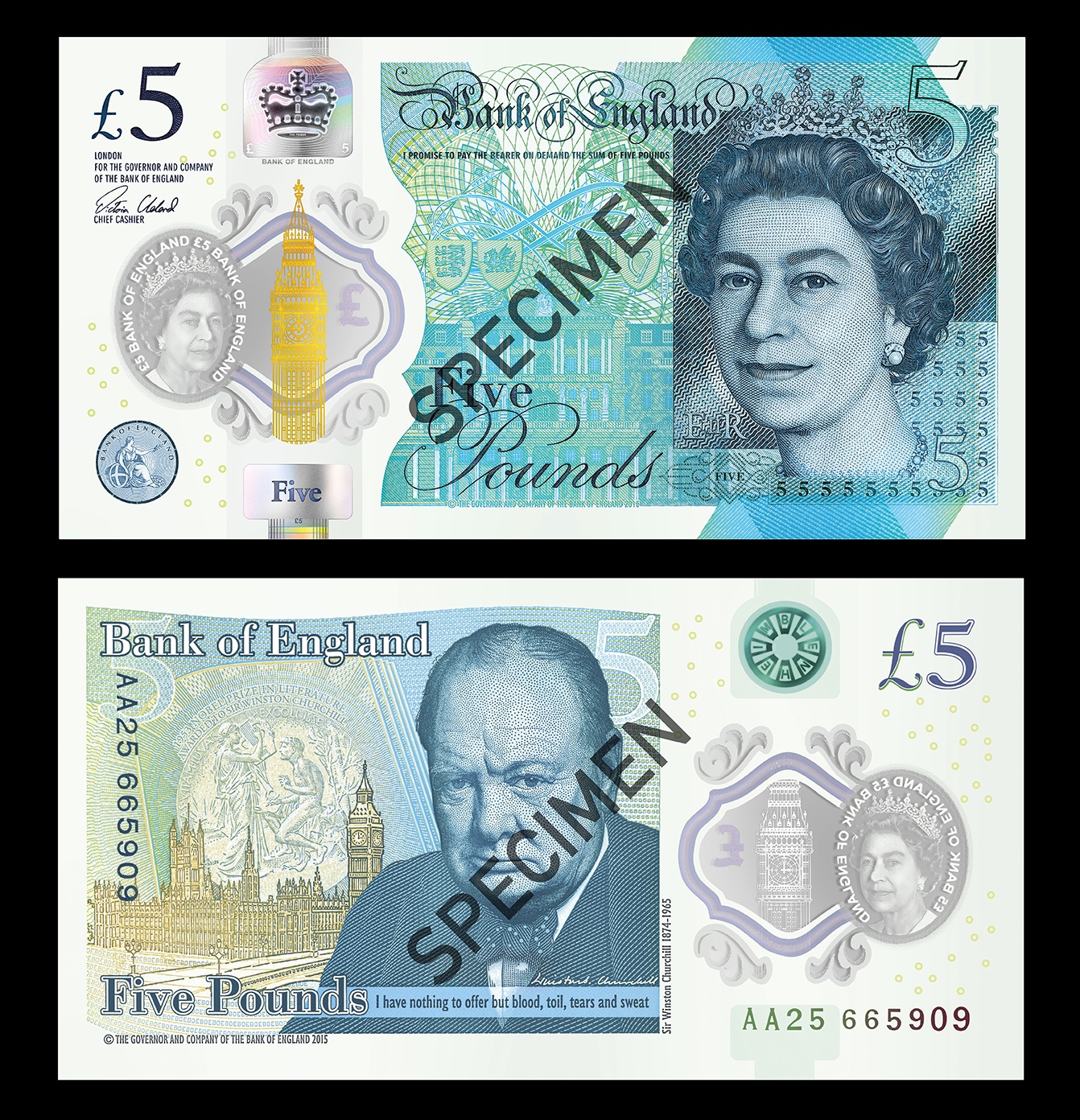Posts Tagged ‘banknote’
Precious paper – the first and last £5 paper banknote…
Later this year, a brand new banknote will enter circulation, but this banknote will be unlike any other seen before…
It wasn’t until 1793 that the first five pound note came into existence. The £5 denomination, known as the ‘white fiver’ lasted with relatively few changes until 1956 when it was last issued and replaced a year later with a new blue five pound note.
The banknote was changed primarily to combat forgery following ‘Operation Bernhard‘ – a huge German war effort which took place during the Second World War and saw around 9 million fake notes printed.
Of course, there have been numerous changes to the £5 banknote since then, from different designs, sizes, colourings and security features.
In 1970 a new series of notes were designed, each featuring an historical figure on the back. Portraits and highly detailed machine engraving blended into historical scenes making the new notes more difficult to copy.

The 1971 £5 Banknote. Designed by Harry Eccelston OBE, the Bank of England’s first full time Artist-Designer.
But perhaps the biggest change of all is yet to come…
On 13th September 2016 a brand new banknote will enter circulation featuring the portrait of much-loved Prime Minster, Sir Winston Churchill . However, this new fiver is unlike any we have ever seen before – it’s printed on polymer.
Polymer notes are made from a flexible plastic, which is resistant to dirt and moisture, which means they will last longer and are better for the environment.The new note has a number of security features including a see-through window and foil Elizabeth Tower – which is gold on the front and silver on the back. It also features multiple holograms and micro-lettering under the Queen’s portrait – which can only be viewed under a microscope.
You have until May 2017 to spend your current £5 notes, after that they will cease to be legal tender – but will still be exchangeable at the Bank of England.
What do you think about the new era of plastic banknotes? Let us know in the comments below.

In a remarkable feat of craftmanship the White Fiver banknote has been re-isued in fine silver – and you can add one to your collection today.
The new face of the £20 banknote has been announced.
The Bank of England recently revealed the face of the new £20 note…
In 2007 a new-style £20 note was introduced, featuring one of the father’s of modern economics, Adam Smith. New security features were added, including a holographic strip, enhanced watermark and ultra-violet features.
However, almost 10 years later The Bank of England has announced an update to the note, with a new design scheduled for 2020.
Meet the new £20 note character: JMW Turner
— Bank of England (@bankofengland) April 22, 2016
Find out more: https://t.co/CsMLVfc9DJ#turner #jmwturner #20poundnote pic.twitter.com/5quxL5SnJz
For the first time ever, The Bank of England asked the British public to nominate people of ‘historical significance‘ from a list of 590 eligible candidates. The candidates, from the world of visual arts, included Alfred Hitchcock, Isambard Kingdom Brunel, Richard Attenborough, Beatrix Potter and William Blake to name just a few.
Once the nominations were in, an appointed committee, with input from public focus groups, produced a shortlist of five candidates – artist JMW Turner, designer Josiah Wedgwood, filmmaker Charlie Chaplin, sculptor Barbara Hepworth and painter William Hogarth.
The final decision was made by the Bank’s governor, Mark Carney, and it has now been revealed that a self-portrait of Joseph Mallord William Turner will replace famous economist and philosopher Adam Smith on the new banknote.
Also featured alongside the self-portrait will be ‘The Fighting Temeraire‘ which was painted by Turner in 1839 and is currently on display in the National Gallery.
Turner’s selection represents the first time that the Bank of England has turned to the British public to assist in the selection process. However, it isn’t just the design that’s changing, the note itself will become the third banknote to be made from Polymer – which are more secure, cleaner, durable and environmentally friendly compared to the existing paper notes.
You won’t have to wait until 2020 to see your first polymer UK banknote though, with the new polymer £5 note, featuring Winston Churchill, due to enter circulation September 2016.
Own Britain’s most famous banknote – issued in fine silver.
British banknotes have undergone many changes since their initial introduction in 1697, from the printing techniques and watermarks to the introduction of colour in 1957.
We have a small stock of Britain’s most famous banknote – the ‘White Fiver’ available, which has been issued in Fine Silver.
You can add one to your collection today.


